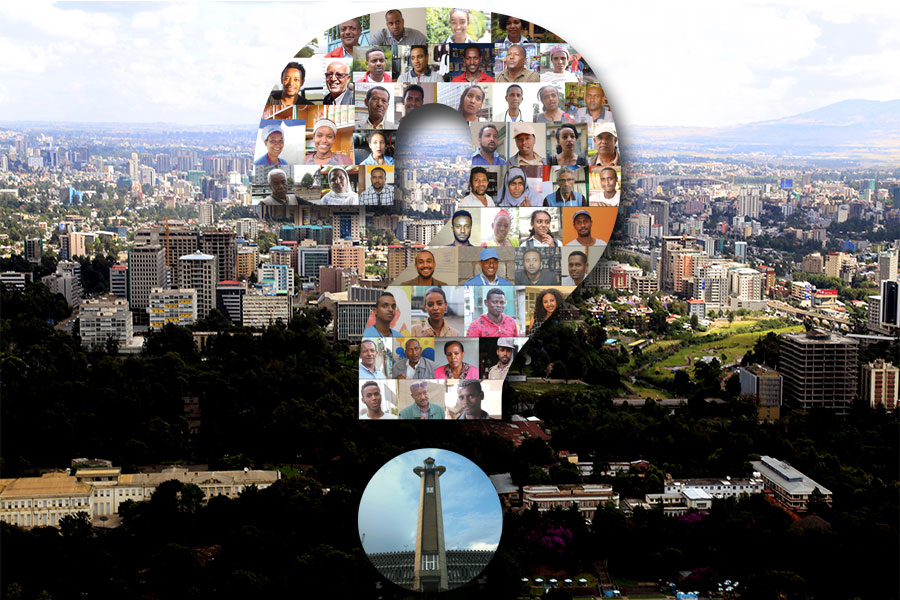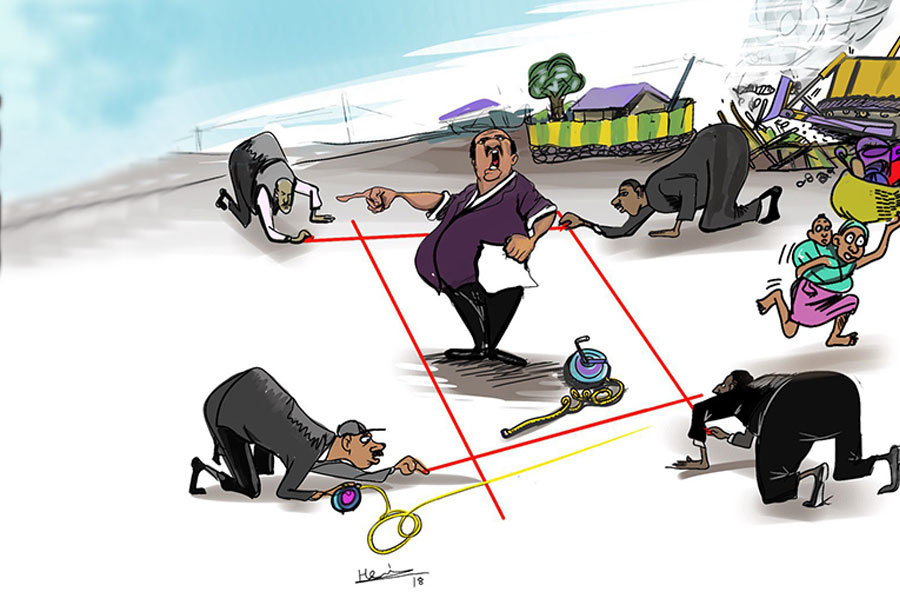
May 17 , 2025. By Solomon Debebe ( Solomon Debebe (solethn@gmail.com), who works as a technical training and wage employment advisor for an international NGO. )
While the Ethiopian Youth Policy of 2004 envisioned a future of empowered and skilled young citizens, its promise faltered under the weight of mismanaged funds and outdated curricula. At a recent workshop, echoes of bygone eras resonated as a State Minister encouraged mastery over antiquated technologies, exposing a disconnect between the country's leadership and the rapid technological advancements gripping the globe, argues Solomon Debebe is a PhD candidate in Business Management at the UNISA and researcher and practitioner in Youth Development area. He can be contacted at solethn@gmail.com.
In contemporary sub-Saharan Africa, young people drive the economy. Nearly two-thirds of the population in many countries is under age 35. The share is even higher in Ethiopia, at roughly 70pc. Twenty years ago, enrolling in university almost guaranteed a job in the public or private sectors. Today, that promise has evaporated. Young graduates find themselves adrift, with no clear policies or programs to chart their futures.
The existing Ethiopian Youth Policy, drafted in 2004, pledged to empower individuals aged 15 to 29 by equipping them with skills, knowledge and ethical integrity to participate fully in a democratic system and thrive in economic and social activities. The policy even declared a youth fund, championed by Prime Minister Hailemariam Desalegn. Yet the fund, hailed as a lifeline for entrepreneurial young people, collapsed due to mismanagement and a lack of transparency.
On the ground, technical and vocational education and training programs have made a difference, helping some young Ethiopians acquire market-ready skills. But, higher education remains stuck in limbo: Universities and government leaders show no urgency to reform curricula to match labour market demands. New graduates, even those from the regional states' top schools, often struggle to secure paid internships or entry-level jobs. Medical doctors, engineers and lawyers can wait months, even years, before landing their first professional roles.
The mismatch between a swelling young workforce and a sluggish economy presents a depressing dilemma. The World Bank estimates that Ethiopia sends nearly two million new job seekers into the labour market each year. The public sector, once the principal employer, cannot absorb new graduates in meaningful roles. The private sector, still dwarfed and undercapitalised, lacks incentives to expand hiring.
Public investment focuses heavily on supply-side measures, such as expanding school enrollment, building campuses, and launching skills training. Demand-side initiatives, such as stimulating enterprises to create jobs, remain underdeveloped.
The result is a dynamic yet disillusioned youth cohort. When policymakers discuss the problem, many default to lamenting the quality of education and the absence of an entrepreneurial mindset among graduates. Yet, anecdotal evidence tells a different story.
At a recent workshop, a State Minister urged young people to master technologies invented in Europe during the early 1900s. Outside the hall, their peers worldwide were busy solving today’s and tomorrow’s challenges, developing fintech apps, experimenting with renewable energy and pioneering sustainable agriculture. The State Minister’s advice uncovered a troubling disconnect. Ethiopia’s leadership struggles to grasp the rapid pace of global change.
Civic and nonprofit groups, once viewed as vital partners in youth development, now operate in an uncertain environment. The government was unprepared when crises hit these organisations, and support systems to sustain them are scarce. As a result, many promising initiatives falter before reaching scale.
Ethiopia’s standing as a top recipient of United States Agency for International Development (USAID) support, with nearly 1.2 billion dollars allocated in 2024, showed the depth of the country’s development challenges. Despite this influx of aid, basic issues persisted, including stubborn youth unemployment, skill gaps and weak private sector growth. Added to that mix, internal conflicts continue in the Amhara and Oromia regional states, further inhibiting economic activities and scaring off potential investors.
Meaningful progress will require political courage and new strategies. It demands that the government address the root causes of unemployment rather than its symptoms. Some suggest constitutional amendments to decentralise power and give regional states more autonomy over economic planning. Others point to successful models abroad, such as several East Asian countries, for example, which combined government-led vocational programs with tax incentives for small and medium-sized enterprises to spur job creation.
Policymakers should acknowledge that leadership failure is not the only factor at play. The education system needs to evolve, as global economic conditions exert headwinds, and rapid demographic growth strains resources. Technological change offers both risks and opportunities. Getting the policy mix right, aligning supply-side investments with demand-side incentives, will be critical.
A more coherent approach could include closer collaboration with the private sector, having clear targets for government-led internships and employment schemes. It can be complemented with rigorous measures to curb nepotism and corruption. It might also involve benchmarking against countries that have successfully undertaken similar transitions. For instance, Malaysia and South Korea once faced surging youth unemployment but now boast vibrant private sectors supported by public policies that linked university outputs to industry needs.
Sadly, time is not on Ethiopia’s side. As the labour force grows, the cost of inaction will rise, risking social unrest and an erosion of hard-won development gains. Frustration will mount if university graduates cannot translate their skills into jobs. That could destabilise communities, fuel migration pressures, and reverse progress in poverty reduction.
The next generation of leaders should embrace a pragmatic vision, treating youth unemployment as a macroeconomic priority, not a social footnote. They should reinvigorate the private sector, making hiring easier for startups and established firms. They should reform universities so that curricula reflect real-world needs and expand government-supported internships to give graduates a foot in the door. They also have to attack corruption head-on, for resources to flow to the most capable and deserving.
Ethiopia possesses much of what it needs for a breakthrough. A dynamic and educated youth population, substantial international goodwill, and a public administration capable of large-scale interventions are all here for use. What is lacking is the political will to transform a strategically coherent plan into tangible outcomes.
PUBLISHED ON
May 17,2025 [ VOL
26 , NO
1307]

Photo Gallery | 174168 Views | May 06,2019

Photo Gallery | 164393 Views | Apr 26,2019

Photo Gallery | 154528 Views | Oct 06,2021

My Opinion | 136648 Views | Aug 14,2021

Oct 11 , 2025
Ladislas Farago, a roving Associated Press (AP) correspondent, arrived in Ethiopia in...

Oct 4 , 2025
Eyob Tekalegn (PhD) had been in the Governor's chair for only weeks when, on Septembe...

Sep 27 , 2025
Four years into an experiment with “shock therapy” in education, the national moo...

Sep 20 , 2025
Getachew Reda's return to the national stage was always going to stir attention. Once...